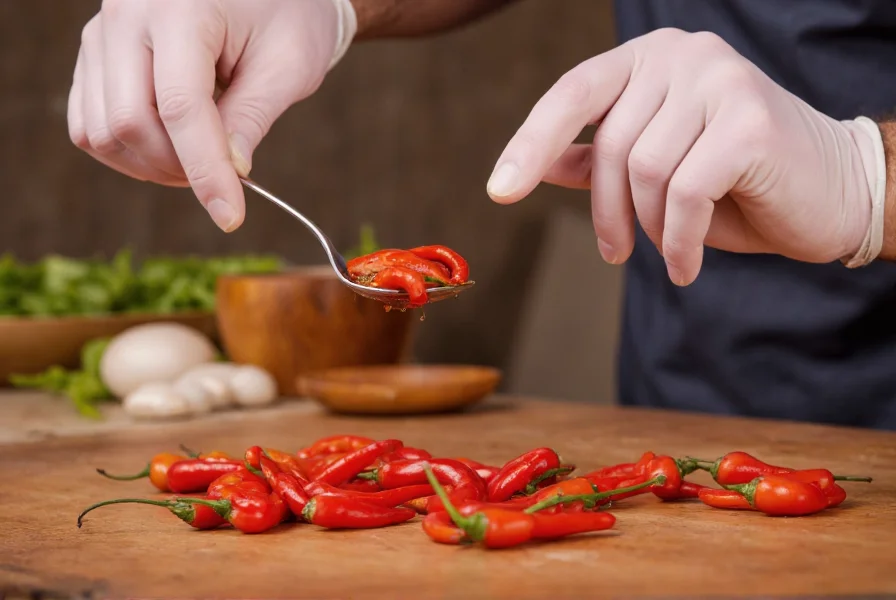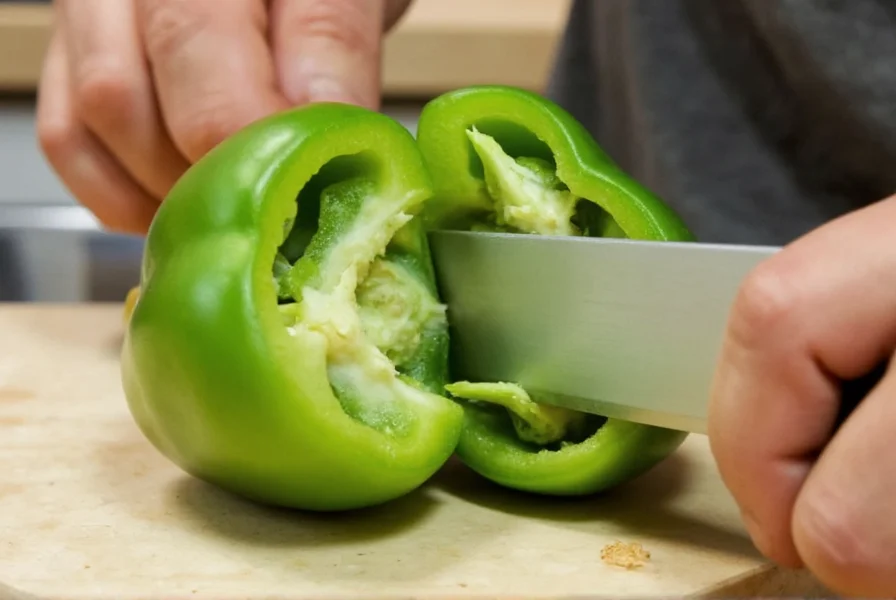The Complete Guide to Cutting Peppers Like a Professional Chef
Knowing how to properly cut peppers is an essential kitchen skill that affects both cooking efficiency and final dish presentation. Whether you're preparing bell peppers for stuffed peppers, dicing jalapeños for salsa, or slicing poblanos for fajitas, the right technique makes all the difference in texture, flavor distribution, and safety.
Essential Tools for Cutting Peppers
Before learning how do you cut a pepper, gather these kitchen essentials:
- Sharp chef's knife (8-inch) - A dull knife requires more pressure and increases slip risk
- Stable cutting board - Wood or plastic with non-slip base
- Vegetable peeler (optional for thin-skinned peppers)
- Gloves (recommended for hot peppers)
- Bowl for seeds and scraps

Step-by-Step Pepper Cutting Techniques
Basic Pepper Preparation (All Varieties)
- Wash thoroughly - Rinse under cold water, scrubbing skin to remove dirt
- Dry completely - Wet peppers are slippery and dangerous to cut
- Inspect for damage - Cut away any soft spots or blemishes
Standard Method for Bell Peppers and Large Varieties
- Place pepper upright on cutting board
- Slice ½ inch from both top and bottom to create stable bases
- Stand pepper on flat end and carefully slice vertically along the ribs to separate flesh from core
- Remove white pith and seeds (wear gloves for hot varieties)
- Lay flat sections skin-side down for final cutting
| Cutting Style | Best For | Knife Technique |
|---|---|---|
| Dicing (¼-½ inch) | Stir-fries, salsas, salads | Make parallel lengthwise cuts, then crosswise |
| Slicing (¼ inch) | Fajitas, sandwiches, roasting | Cut horizontally across pepper sections |
| Julienne (matchstick) | Stir-fries, garnishes | Cut lengthwise into thin strips |
| Mincing (fine) | Sauces, relishes, hot sauces | Small crosshatch pattern before fine chopping |
Special Techniques for Different Pepper Types
Handling Hot Peppers Safely
When learning how to cut spicy peppers like habaneros or ghost peppers, follow these critical safety steps:
- Always wear nitrile gloves to prevent capsaicin burns
- Cut in well-ventilated area or near stove vent
- Use separate cutting board from other ingredients
- Never touch your face during preparation
- Wash hands thoroughly with soap and water afterward
Thin-Skinned Peppers (Fresno, Poblano)
For peppers with delicate skins that tear easily:
- Use a paring knife instead of chef's knife
- Cut vertically first to open pepper
- Remove seeds with spoon rather than knife
- Work slowly to prevent tearing the flesh

Professional Tips to Improve Your Pepper Cutting
- Maintain consistent size - Uniform pieces cook evenly
- Keep blade angle consistent - 45-degree angle for julienne cuts
- Use claw grip - Curl fingertips under to protect from blade
- Work systematically - Process all peppers the same way for consistency
- Store properly - Keep cut peppers in airtight container with paper towel
Common Mistakes When Cutting Peppers
Avoid these frequent errors that compromise both safety and results:
- Using a dull knife (increases slip risk)
- Cutting peppers while standing over sink (seeds fall everywhere)
- Leaving white pith (bitter taste in final dish)
- Inconsistent sizing (leads to uneven cooking)
- Touching face after handling hot peppers
Storing Cut Peppers Properly
Maximize freshness of your prepared peppers:
- Store in airtight container with paper towel to absorb moisture
- Refrigerate within 2 hours of cutting
- Bell peppers last 5-7 days when properly stored
- Hot peppers maintain potency for 3-5 days refrigerated
- Freeze diced peppers for up to 6 months (blanch first for best results)
FAQ: Frequently Asked Questions About Cutting Peppers
What's the safest way to cut hot peppers without burning your hands?
Always wear nitrile gloves when cutting hot peppers. Use a dedicated cutting board that won't absorb capsaicin. Work in a well-ventilated area and avoid touching your face. After preparation, wash hands thoroughly with soap and water, then rub with lemon juice or vinegar to neutralize any remaining oils. Never use latex gloves as capsaicin can penetrate them.
How do you prevent peppers from rolling on the cutting board?
To stabilize round peppers, first slice a thin portion from the bottom to create a flat surface. Alternatively, cut the pepper in half vertically before laying it flat for dicing. For smaller peppers, place them between two larger vegetables to prevent rolling. Always ensure your cutting board has a non-slip base or place a damp towel underneath.
What's the best knife for cutting different pepper varieties?
A sharp 8-inch chef's knife works best for most peppers. For larger bell peppers, this provides enough length for efficient slicing. For smaller or delicate peppers like fingerlings or thin-skinned poblanos, switch to a 4-5 inch utility knife. When mincing hot peppers, a small paring knife gives better control. Always ensure your knife is properly sharpened before starting.
How do you properly remove seeds from peppers without making a mess?
The cleanest method is to first cut the top and bottom off the pepper, then slice vertically to open it up. Place the pepper flat on the board and use a small spoon to scrape out seeds and membranes. For hot peppers, do this over a bowl to contain any stray seeds. Alternatively, hold the pepper under running water while removing seeds, but this can wash away some flavor compounds.
Can you cut peppers ahead of time for meal prep?
Yes, you can cut peppers 2-3 days in advance for meal prep. Store them in an airtight container lined with a paper towel to absorb excess moisture. Bell peppers maintain quality for 5-7 days when properly stored, while hot peppers stay fresh 3-5 days. For best results, keep cut peppers away from strong-smelling foods as they can absorb odors. Avoid washing peppers until ready to use to prevent premature spoilage.











 浙公网安备
33010002000092号
浙公网安备
33010002000092号 浙B2-20120091-4
浙B2-20120091-4